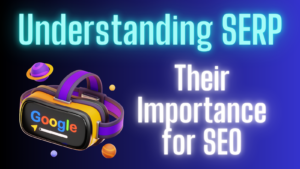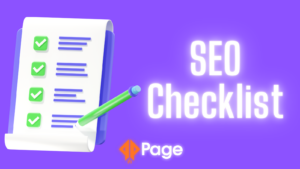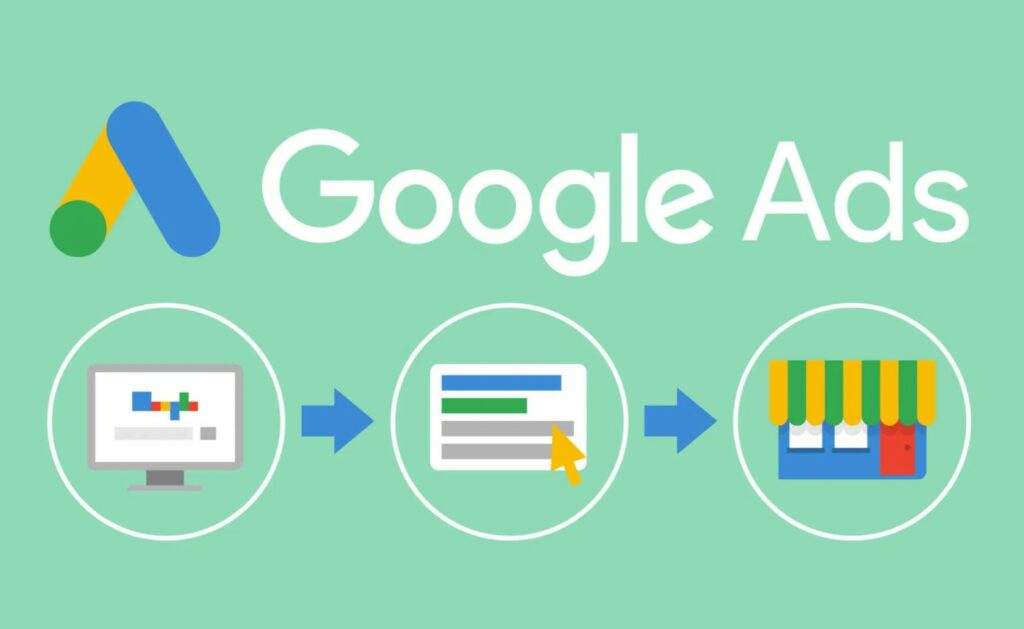Amidst the competitive arena of online advertising, Google Ads emerges as a formidable tool, offering businesses a dynamic platform to increase visibility, drive traffic, and ultimately, catalyze growth. As we delve into the intricacies of Google Ads, it’s crucial to understand its fundamental components, strategic applications, and the potential it holds for businesses aiming to thrive in the competitive digital marketplace. Additionally, platforms like Page Ads provide an integrated suite of digital marketing tools, enhancing the advertising experience and offering marketing solutions for businesses.
Decoding Google Ads – The Engine of Modern Marketing
Google Ads stands as a beacon in the digital marketing world, offering an unparalleled platform for businesses to amplify their visibility and connect with their target audience. As a pay-per-click (PPC) advertising system, it revolutionizes how businesses approach advertising, moving beyond traditional methods to a more dynamic, results-driven strategy. This section delves deeper into the mechanics and strategic implications of Google Ads, highlighting its role as a catalyst for business growth and customer engagement.
The Mechanics of Google Ads – Precision in Advertising
At the heart of Google Ads is a sophisticated auction system that operates every time a user initiates a search query. Businesses select keywords they believe their prospective customers will use when looking for their products or services. These keywords become the battlegrounds on which businesses bid, not in the traditional sense, but in a digital auction that occurs in milliseconds. The bid amount, combined with the ad’s Quality Score—a metric that assesses the relevance and quality of the ad and its landing page—determines the ad’s placement.
But it’s not just about bidding and placement. Google Ads offers a variety of ad formats and extensions that enhance the visibility and appeal of the ads. From text ads that appear in search results to more visual shopping ads and video ads, the platform provides a diverse range of options to capture user attention. Ad extensions further enrich these ads, allowing businesses to include additional information like location, phone numbers, and links to specific parts of their website, making the ads more informative and clickable.
Targeting and Engagement – The Core of Google Ads Strategy
Google Ads’ targeting capabilities are a testament to its power. It’s not just about reaching a vast audience; it’s about reaching the right audience. Advertisers can target users based on various factors, including their location, language, device, and even the time of day they’re most likely to search. For instance, a local restaurant might target users within a specific radius during lunch hours, while an online retailer might target users who have previously visited their site but didn’t make a purchase.
Engagement is at the core of Google Ads. The platform’s success hinges on its ability to engage users with relevant, compelling ads that drive action. This is where ad relevance and quality come into play. Ads that closely match the user’s intent and provide clear, valuable information are more likely to be clicked. This not only improves the user’s experience but also enhances the advertiser’s return on investment, as Google rewards well-performing ads with better placement and lower costs.
Cost-Effectiveness and Flexibility – Maximizing ROI with Google Ads
One of the most appealing aspects of Google Ads is its cost-effectiveness. Businesses have complete control over their advertising budgets, deciding how much they’re willing to spend per day or per click. This pay-per-click model ensures that they’re only paying when users take the desired action, whether it’s clicking on the ad to visit the website or making a phone call. Moreover, with real-time tracking and analytics, advertisers can continuously monitor their campaigns’ performance and make adjustments to optimize their spend and strategy.
Flexibility is another hallmark of Google Ads. The platform accommodates businesses of all sizes and budgets, offering various bidding strategies to suit different goals and constraints. Whether it’s maximizing clicks, impressions, or conversions, Google Ads provides the tools and insights needed to tailor campaigns to specific objectives. This flexibility extends to campaign adjustments as well. Advertisers can pause, modify, or stop their campaigns at any time, allowing them to respond quickly to market changes or shifts in strategy.
Crafting a Successful Google Ads Strategy
Creating a robust Google Ads strategy is akin to crafting a bespoke suit. Every detail must be tailored to fit the unique contours of your business, ensuring that each element works harmoniously to present your brand in the best light. This section delves deeper into the art and science of building a successful Google Ads strategy, focusing on audience understanding, keyword mastery, and the creative synthesis of ad content and design.
Audience Insight – The Bedrock of Effective Campaigns
The foundation of any successful Google Ads strategy is a deep understanding of the target audience. This goes beyond basic demographics to encompass a comprehensive analysis of potential customers’ needs, preferences, behaviors, and decision-making processes. Businesses need to immerse themselves in the world of their audience, employing tools like customer surveys, focus groups, and analytics to gather rich insights. Understanding the customer journey from awareness to decision is critical in crafting messages that resonate at every stage.
Segmentation plays a vital role here. By segmenting the audience based on various criteria such as interests, past purchases, or engagement levels, businesses can create highly targeted campaigns that speak directly to the needs and desires of different groups. This level of personalization makes ads more relevant and effective, increasing the likelihood of engagement and conversion.
Keyword Mastery – Balancing Breadth and Precision
Selecting the right keywords is a delicate balance between breadth and precision. Broad terms may attract a wide audience but risk diluting the relevance, while overly specific terms might limit the reach. The key is to understand the language and search habits of the target audience, using tools like Google’s Keyword Planner to uncover the terms they use when seeking products or services like yours.
Long-tail keywords are particularly valuable in this regard. These longer, more specific phrases often indicate a higher intent to purchase or engage, as they reflect a user’s progression down the path of specificity. By incorporating a mix of broad and long-tail keywords, businesses can cast a wide net while also capturing those users who are closer to making a decision.
Bidding strategy is equally important. It’s not just about setting a budget; it’s about understanding the value of different keywords and allocating resources accordingly. This might involve bidding more aggressively on high-value keywords that are directly linked to sales or conversions, while spending less on broader terms used earlier in the customer journey. Continuous testing and adjustment are crucial, as the competitive landscape and keyword performance can change rapidly.
The Art of Ad Content and Design
The final piece of the strategy puzzle is the ad content and design. This is where creativity meets strategy, as businesses must craft ads that not only grab attention but also clearly communicate the value proposition and encourage action. The headline is often the first thing users see, making it critical to convey both the offer and the benefit succinctly and compellingly. Descriptions provide the opportunity to elaborate, highlighting key features, advantages, or special offers.
Visuals play a powerful role in attracting and retaining user attention. Whether it’s an image, video, or graphic, the visual element should be eye-catching and relevant, reflecting the brand’s identity and resonating with the target audience. For businesses with physical products, high-quality images or videos showcasing the product can be particularly effective.
The alignment between the ad and the landing page is another critical factor. Users who click on an ad expect to find what was promised, so the landing page must deliver on the ad’s offer and message. This continuity not only improves user experience but also enhances the likelihood of conversion, as it maintains the momentum of the user’s interest and intent.
Leveraging Page Ads for Enhanced Digital Marketing
For businesses seeking a comprehensive digital marketing solution, platforms like Page Ads offer a robust suite of tools designed to streamline and enhance advertising efforts. With Page Ads, users can access a variety of digital marketing tools, each tailored to different aspects of the advertising process, from campaign management and optimization to detailed analytics and reporting.
One of the key advantages of using a platform like Page Ads is the integration of various marketing channels and tools. Whether it’s managing search ads, social media campaigns, or programmatic advertising, Page Ads provides a centralized dashboard for monitoring and adjusting all aspects of a digital marketing strategy. This not only saves time but also ensures a cohesive and coordinated approach to advertising across multiple channels.
Furthermore, Page Ads emphasizes the importance of data-driven decision-making. With advanced analytics and reporting features, businesses can gain deep insights into campaign performance, user behavior, and market trends. This data is invaluable for refining strategies, identifying successful elements, and allocating resources more effectively to maximize return on investment.
Navigating the Challenges and Maximizing ROI
While Google Ads offers immense potential for business growth, navigating its complexities can be challenging. The digital advertising landscape is highly competitive, and standing out requires not only a well-crafted strategy but also continuous optimization and adaptation. Businesses must stay abreast of changes in search algorithms, competitor strategies, and consumer behavior to maintain an edge.
Maximizing return on investment (ROI) in Google Ads involves constant monitoring and refinement. This includes analyzing click-through rates, conversion rates, and other key performance indicators to understand what’s working and what’s not. It also involves experimenting with different ad formats, landing pages, and targeting options to discover the most effective combinations.
In addition, businesses must be mindful of the quality and relevance of their ads. Google’s Quality Score is a critical factor in determining ad placement and cost. Ads that are highly relevant to user queries and lead to positive user experiences tend to perform better and cost less. Therefore, focusing on creating high-quality, relevant ads is not only beneficial for engaging potential customers but also for improving the overall efficiency and cost-effectiveness of Google Ads campaigns.
Embracing Google Ads for Business Growth
Google Ads stands as a powerful tool in the arsenal of digital marketing, offering businesses a direct path to increased visibility, engagement, and growth. By understanding its workings, crafting strategic campaigns, and leveraging platforms like Page Ads, businesses can effectively navigate the digital advertising landscape and achieve their marketing objectives. As the digital world continues to evolve, embracing Google Ads and continuously refining strategies will be key to staying competitive and maximizing the potential of online advertising.





